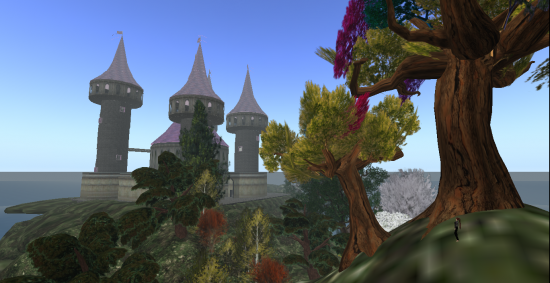Ten Kitely users lost 13 regions this week because of a bug in the company’s software. The bug has been fixed, users compensated for their losses, and a new automated backup system is in the works.
Kitely is a new company with software that they’re still testing — and a service that they’re currently giving away. But even established vendors have been known to lose data.
Last month, an upgrade on the Avination grid resulted in the temporary loss of virtual property for many users. Last year, an OpenSim hosting company discovered that their backup process had failed — for six months in a row — causing one of their customers to lose months of work on a region. In Second Life, inventory losses gave rise to third-party backup services like Second Inventory.

What happened with Kitely this week is that a bug in the software caused regions to be accidentally deleted. The bug was fixed, but not before some regions were lost. Since Kitely is a brand-new service, and doesn’t currently offer any in-world shopping opportunities, this didn’t result in significant losses for most customers. For example, my lost region was simply the VCE default region that Kitely offers, which I created to try out the system. Kitely still gave me 3,000 credits (about $10 worth) to compensate me for my loss.
“We back up the grid database by dumping it to a file, and then storing that file in Amazon S3,” Oren Hurvitz, Kitely Ltd.’s vice president for research and development, told Hypergrid Business. “We have multiple backups, by date.”
The data for the individual regions and for user inventories is stored with the Amazon S3 storage service, Oren Hurvitz, Kitely Ltd.’s vice president for research and development, told Hypergrid Business. “Amazon copies files in S3 to several data centers around the world, and they claim 99.999999999 percent durability.”
The Amazon S3 storage is separate from the Amazon EC2 computing cloud, which suffered a spectacular network outage this week.
With daily backups and Amazon’s reliability when it comes to storage, Kitely wasn’t worried about losing more than a day’s worth of data to storage errors, he said.
“However, that still leaves bugs and human errors — both ours and, possibly, the users,” he said. “For example, if they delete a world but choose the wrong one by mistake.”
And that’s what happened with the 13 lost regions. As far as the software was concerned, the regions had been deleted deliberately — and the system went out and deleted them for good.
“We deleted the region both from the hard disk and from S3, which is what we do when a user deletes a world,” Hurvitz said. “If the problem had been different, just loss of data on a hard disk, then we would have been able to restore the data from S3.”
Currently, if a user accidentally deletes a region, it can’t be recovered. Â Kitely is considering changing that, but that would create its own set of problems.
“For example, what happens when you delete a Facebook account? It turns out that Facebook doesn’t really delete it: they just mark it for deletion,” said Hurvitz. “If you access your profile within a few weeks after you’ve asked for it to be deleted then Facebook assume you still want it, and they un-delete it.”
The problem is that some users might want their deleted stuff to be really deleted — for example, if it contains copyrighted material, or sensitive information.
“Then we would be failing the user by not deleting every last copy of the region,” Hurvitz said. “It is these tradeoffs that are giving us pause about what we should do.”
Today, Kitely users can’t make a local backup of their regions by exporting an OAR file.
This functionality is coming.
Until then, however, users can easily make duplicates of their regions by simply clicking on the “Copy” button on their Worlds screen. There’s a small price for having an unused region on the Kitely platform, but it’s just $0.10 a month.
So, until OAR exports are available, Kitely users are encouraged to make regular backups of their work by creating duplicates as they go along.
In addition, those using the Imprudence viewer can make local backups of individual objects and builds, by using the built-in export function.
Unfortunately, not every platform currently allows users to make backups of their virtual content, in an attempt to reduce digital piracy or to keep users locked within their particular system. For example, Second Life currently does not allow the export of a full region — even if everything on that region was created by the user. In addition, it does not allow the export of third-party content, even with distributed under open source or Creative Commons licenses, or if the third-party content provider specifically allows backups of their content.
Since the law about personal backups as a fair use of digital content is not clear, customers should always ask for explicit permission from copyright holders before making backups of third-party content.
- OSgrid back online after extended maintenance - April 16, 2025
- Analysts predict drop in headset sales this year - March 25, 2025
- OSgrid enters immediate long-term maintenance - March 5, 2025
